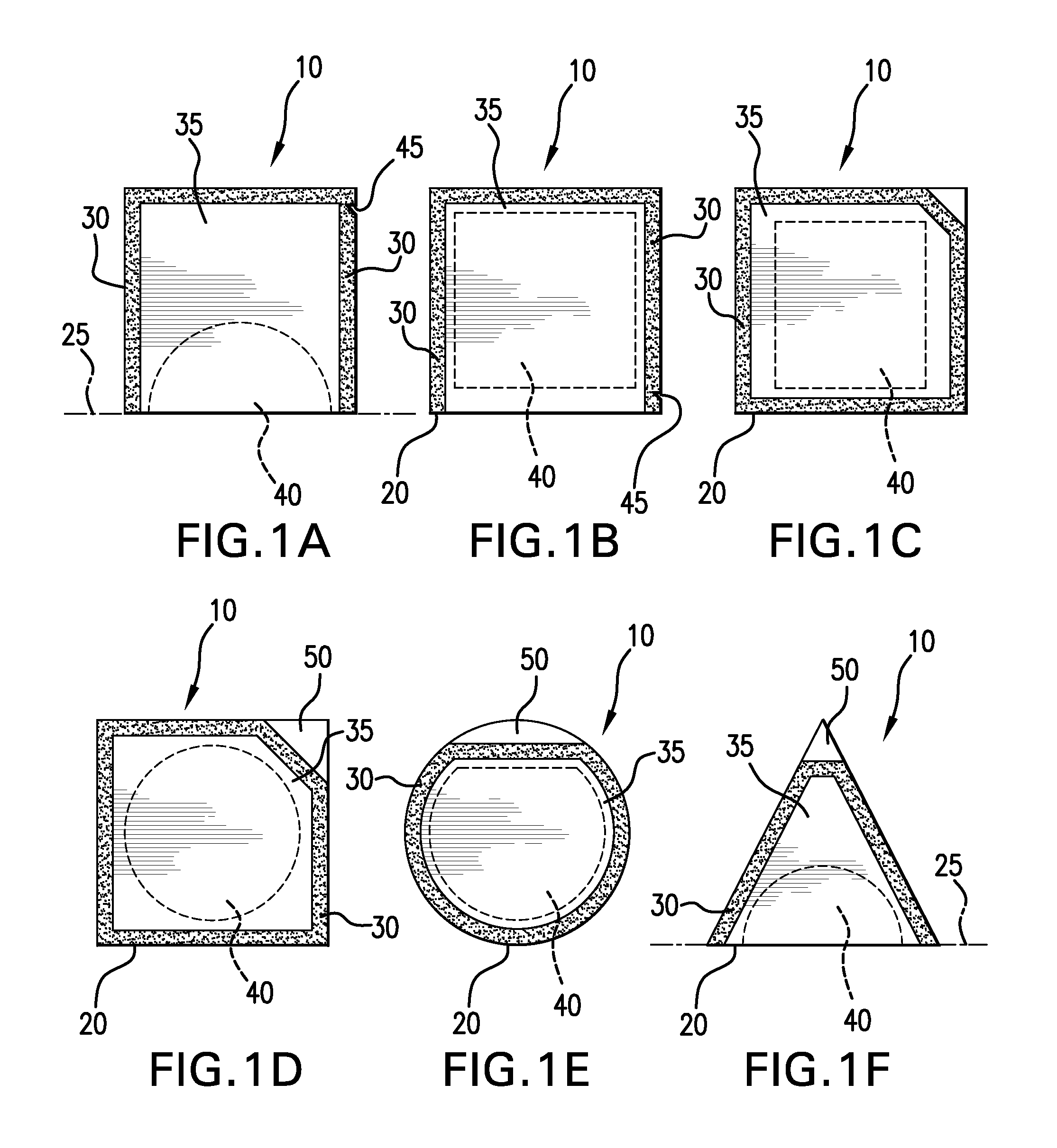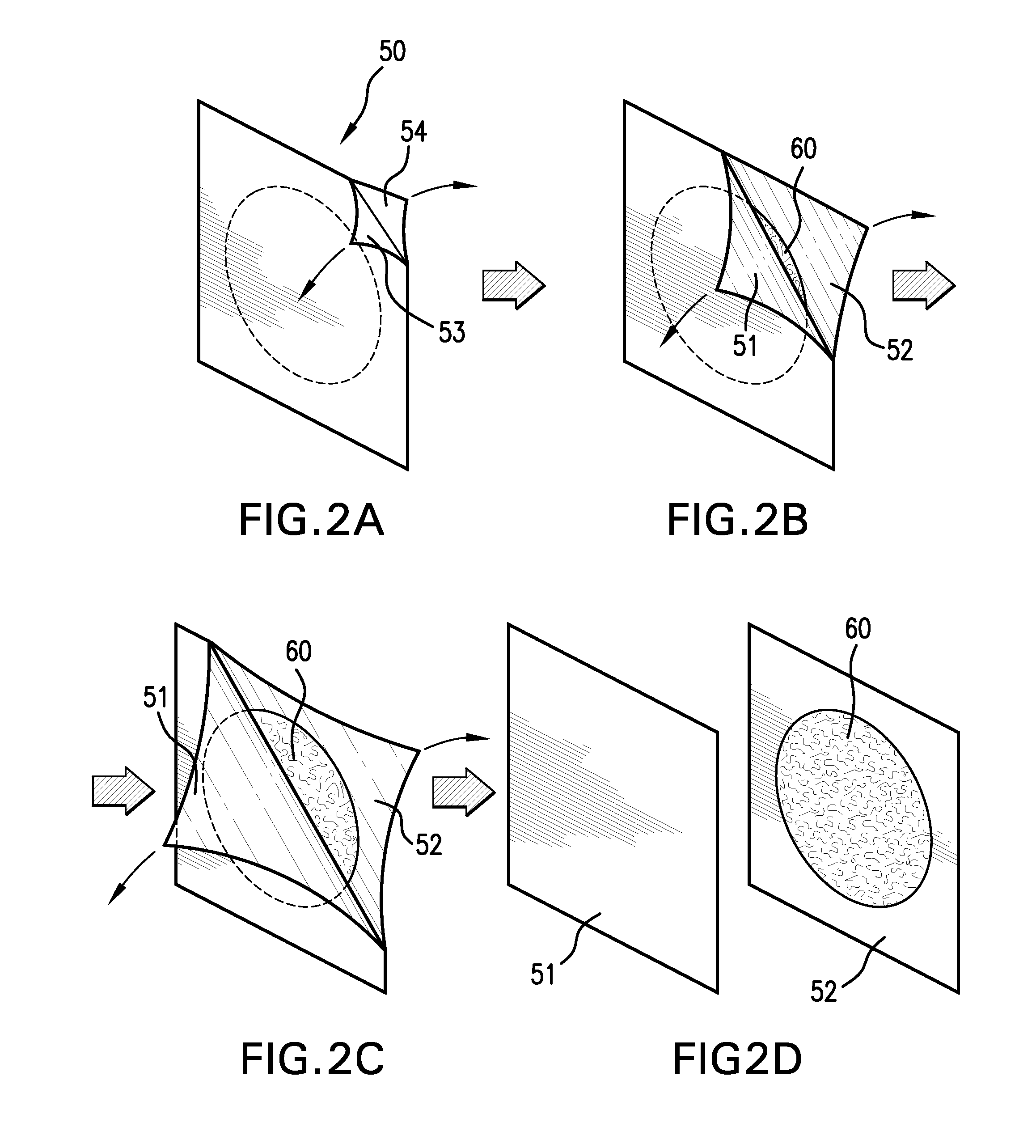Sanitizing devices for needleless medical fittings
a technology of sanitizing devices and medical fittings, which is applied in the direction of disinfection, transportation and packaging, rigid containers, etc., can solve the problems of significant unmet needs, increased risk of developing serious blood stream infections, and compromised skin of patients
- Summary
- Abstract
- Description
- Claims
- Application Information
AI Technical Summary
Benefits of technology
Problems solved by technology
Method used
Image
Examples
example 1
Analysis of Contaminated Needleless Medical Valves Following Sanitizing Treatment
[0098]This example describes an assay for testing the effectiveness of using a sanitizing article according to the invention to sanitize a needleless medical valve contaminated with a bacterial biofilm.
[0099]The assay begins by inoculating a needleless medical valve with an aliquot of an inoculum containing a viable microorganism, preferably one encountered in typical hospital settings. For example, an aliquot from a log phase liquid culture of Geobacillus stearthermophilus can be inoculated directly onto the surface of the access port of each of several Smartsite® needleless medical valves (B. Braun Medical Inc., Bethlehem, Pa.). In addition, an aliquot from the same culture can also be inoculated directly onto the luer threads of some or all of the Smartsite® valves. The valves are then left undisturbed for a suitable period, for example, 30 minutes, at a temperature that promotes survival of the inoc...
example 2
Assay for Assessing Effectiveness of Sanitizing Contaminated Needleless Valves
[0102]This example describes an assay for testing the effectiveness of sanitizing a needleless medical valve contaminated with a bacterial biofilm. This assay is similar to that described in Example 1, the difference being that after the contaminated needleless medical valves are disinfected, they are individually placed in a sterile chamber (e.g., a plastic 90 mm Petri dish) and allowed to incubate at a suitable temperature for a sufficient period. The incubation period is intended to allow contaminating microorganisms that remain on the contaminated but sanitized surface(s) to recover before being collected onto a 0.45 micron filter and transferred to a plate containing nutrient agar for outgrowth and CFU enumeration.
example 3
Visual Assay for the Assessing Effectiveness of Sanitizing Contaminated Needless Valves
[0103]This example describes an assay for testing the effectiveness of sanitizing a needleless medical valve contaminated with a microorganism engineered to fluoresce under ultraviolet light. Procedures such as those described in this example can also be used to compare the sanitizing effect of articles according to the invention as compared to other valve-cleaning techniques.
[0104]This assay relies on applying approximately 100 uL of Glo Germ™ (Glo Germ™ Co., Moab, Utah) to the surface o the access port and luer threads of each of two or more ULTRASITE® needleless medical valves (B. Braun Medical Inc., Bethlehem, Pa.). Post-inoculation, each valve is photographed under ultraviolet light. Each valve under test is then sanitized using a test or control device using a suitable procedure, for example, a procedure such as described in Example 1 or 2, above. After sanitizing, each valve is again photog...
PUM
 Login to View More
Login to View More Abstract
Description
Claims
Application Information
 Login to View More
Login to View More - R&D
- Intellectual Property
- Life Sciences
- Materials
- Tech Scout
- Unparalleled Data Quality
- Higher Quality Content
- 60% Fewer Hallucinations
Browse by: Latest US Patents, China's latest patents, Technical Efficacy Thesaurus, Application Domain, Technology Topic, Popular Technical Reports.
© 2025 PatSnap. All rights reserved.Legal|Privacy policy|Modern Slavery Act Transparency Statement|Sitemap|About US| Contact US: help@patsnap.com



